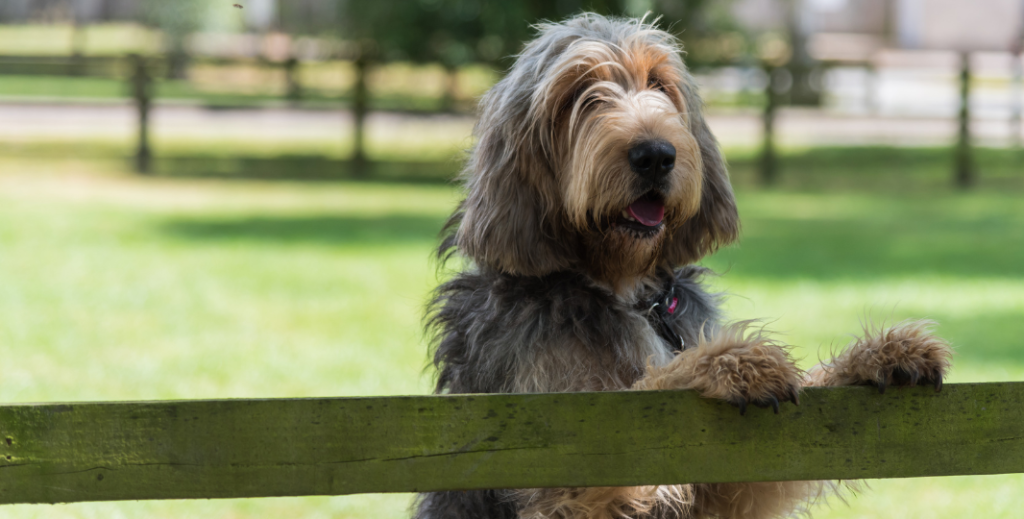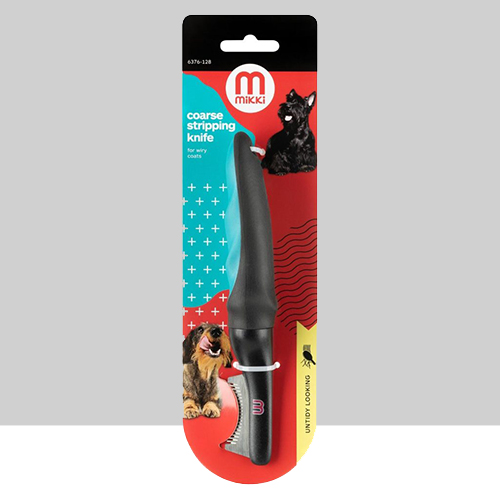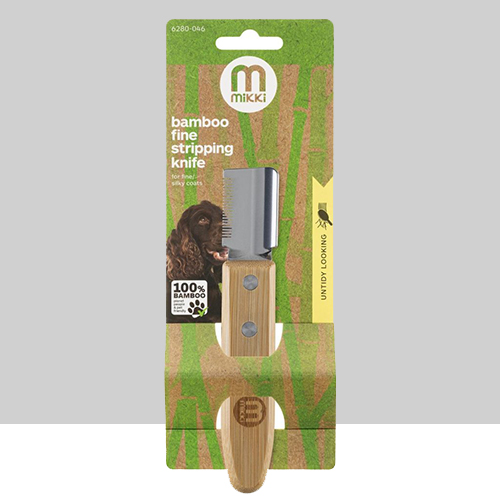Stripping Knives: For who and how?
Many dogs today are kept purely as pets rather than for the work their breed was originally intended – such as working and hunting, which our wiry haired dogs, mainly found in the Terrier group have been bred over time for. Keeping their coats as nature intended requires certain grooming tools and techniques.
What is a Stripping Knife?
Stripping knives are used for dogs with wiry coats – like many terriers and help to tidy up their appearance so as to achieve their breed standard or look.
They work by removing dead hair from the topcoat without causing damage to the undercoat. Wiry coated dog breeds usually have years of breeding to make them suitable for hunting. Nature has developed their coats to be tough and coarse, suitable for running through thick undergrowth when hunting. The coarse wiry hairs are not attached the same way a human hair is, the hair follicle releases the hair if it is pulled so as to not hurt the dog if it is caught while chasing through thick brush.

Popular wire hair dog breeds:
- Wire Fox Terrier
- Schnauzer
- Scottish Terrier
- Otterhound
- Kerry Blue Terrier
- German Wire-Haired Pointer
- Wire-Haired Dachshund
- Wire-Haired Vizsla
- Jack Russell
How to use a stripping knife:
- Ensure your dog’s coat can be hand stripped (it hasn’t been previously clipped which can soften and/or thicken the coat) – if in doubt seek advice from a qualified groomer.
- Before using a stripping knife, ensure your pet is comfortable and used to being groomed. Remove any knots or matts by grooming through the coat first.
- Begin by holding the stripping knife with the smooth side of the blade facing you.
- Place your hand on the dog, close to the area you are going to strip and hold the skin taut whilst you are stripping – this will make the procedure more comfortable for your dog.
- Following the grain of the dog’s coat, use a combing action to trap the hair between the serrated teeth. Hold the hair in place with your thumb and gently pull in the direction of the lay of the coat to remove the hair. Use an arm and shoulder pulling movement, not a wrist action.
- If you flex your wrist, you will cut rather than pull the hairs with the knife. Compare the hairs being removed from the finger stripping and knife stripping. If you are plucking, the hair is of uneven length. If you are cutting, the hair will be even in length and this is undesirable as it can damage your dog’s coat.
- Remember to work a small area at a time until the entire outer coat has been removed and a rolled coat has been achieved. Note – hand stripping your dog on a regular basis (every 4-6 weeks depending on breed) will achieve what’s known as a “rolled coat” – where the hairs fit neatly into each other and the coat becomes flatter and coarser. Irregular stripping (say once every 6 months) will cause the coat to “blow”, making it longer and open (irregular looking) – stripping a “blown” coat can cause bald patches as the coat will try to regenerate itself. If you have any doubts about the procedure seek advice/help from a qualified dog groomer or show breeder.
Top Tips:
For best results, don’t bath your dog prior to stripping as this will prevent you from getting a good grip on the hair.
Using a block of grooming chalk on the area you will be pulling can also help you get a better grip.






